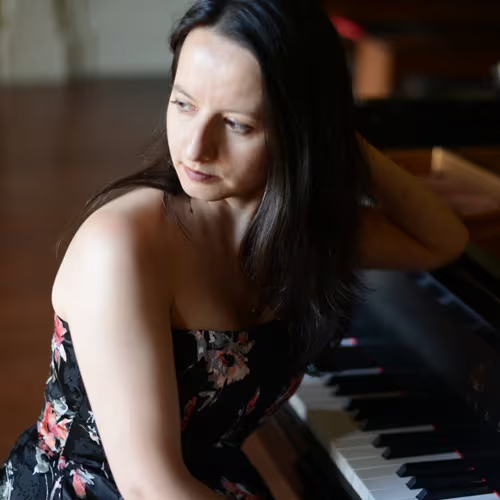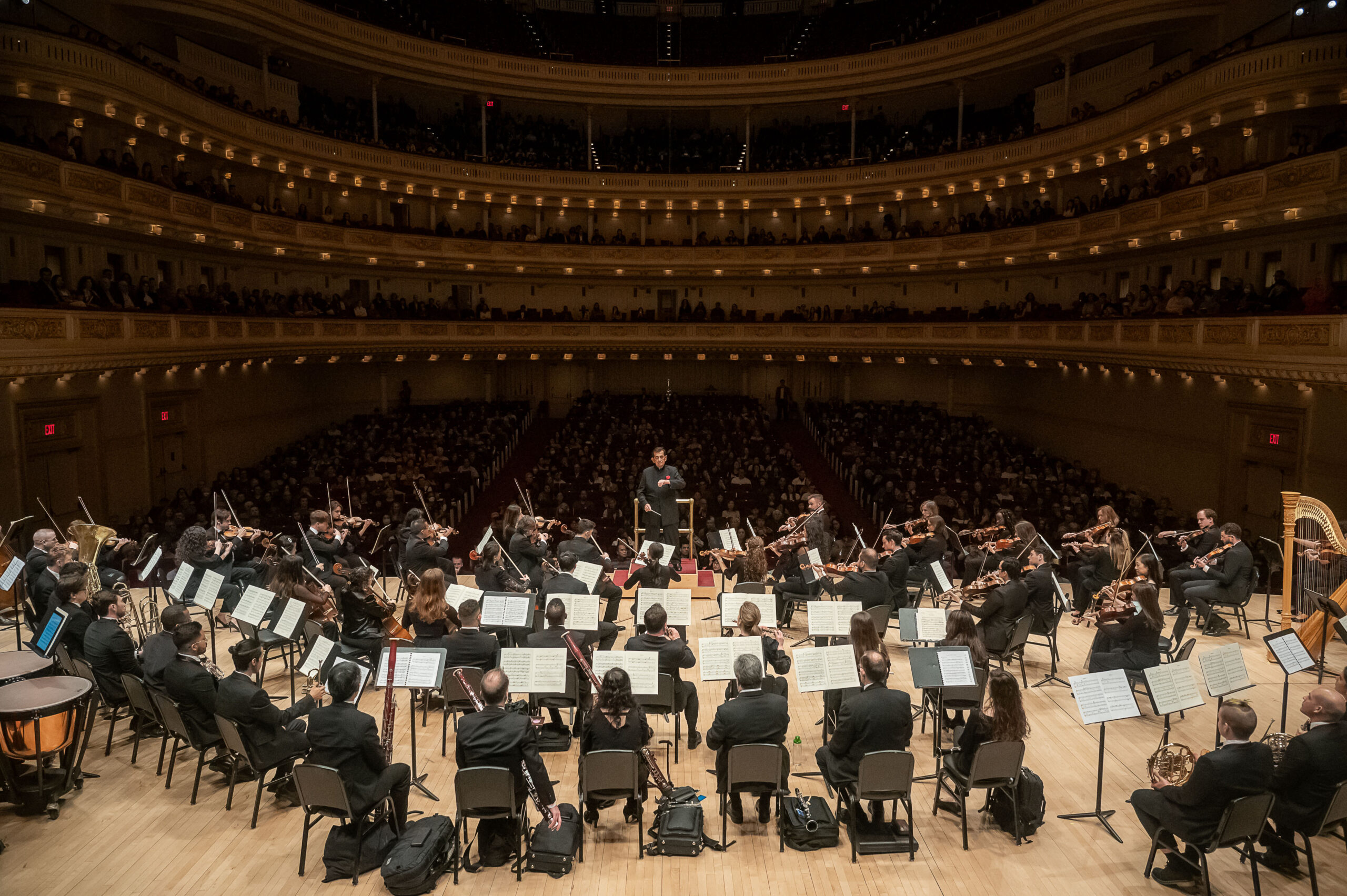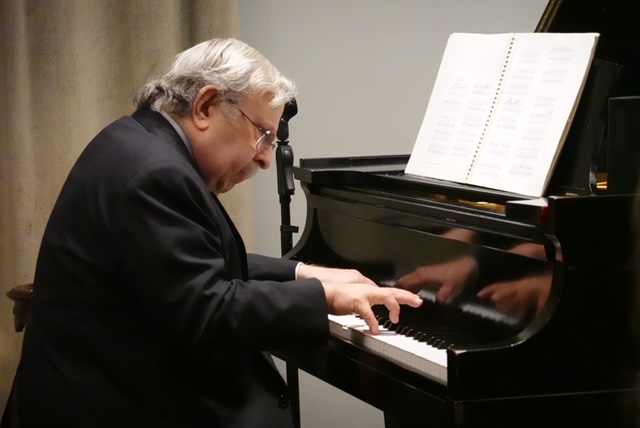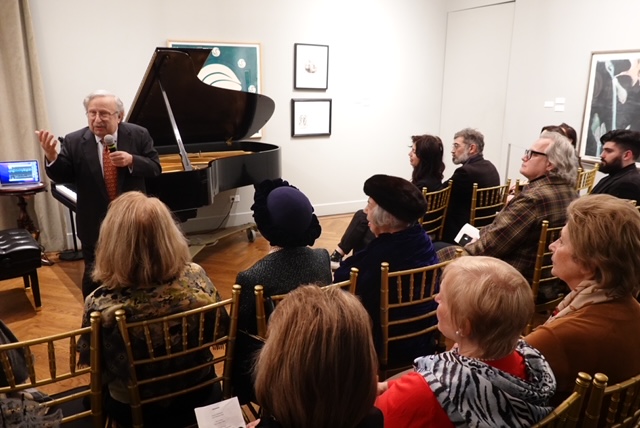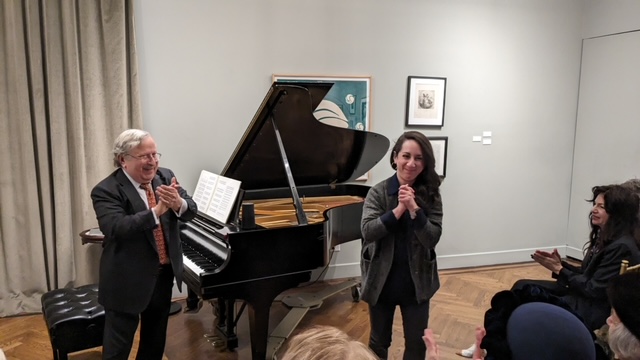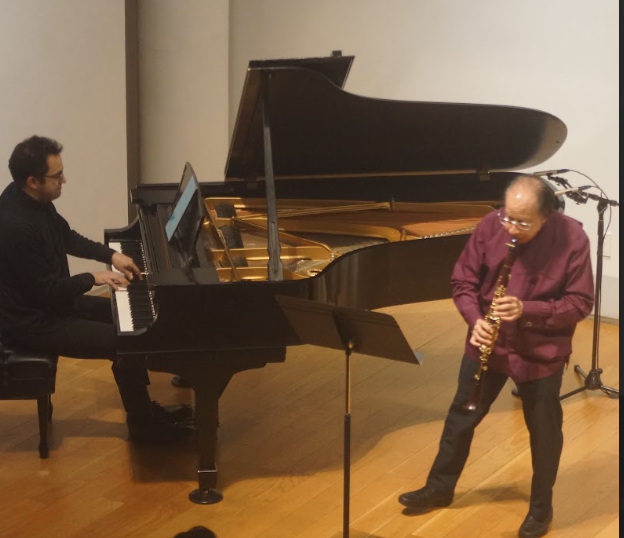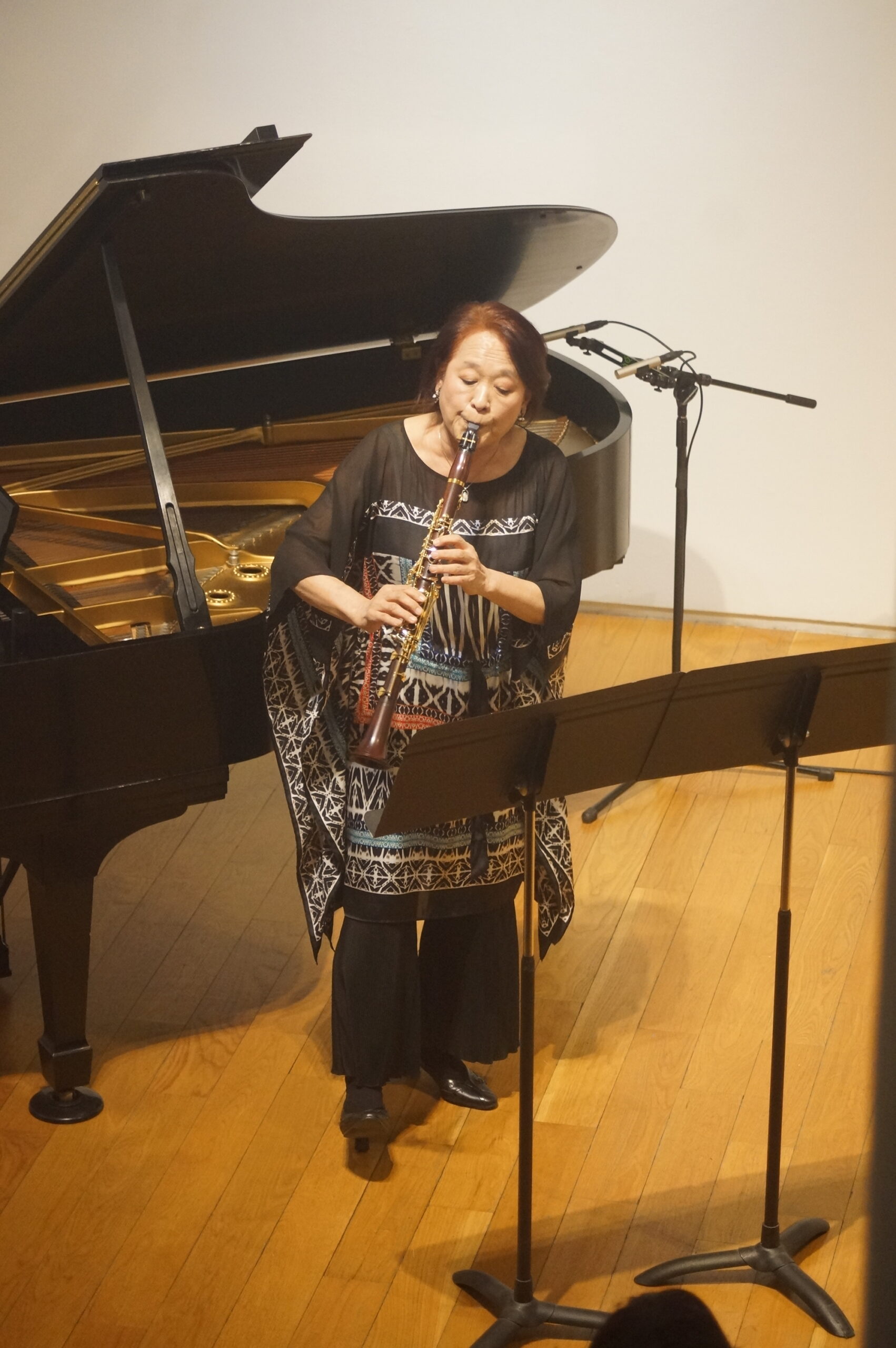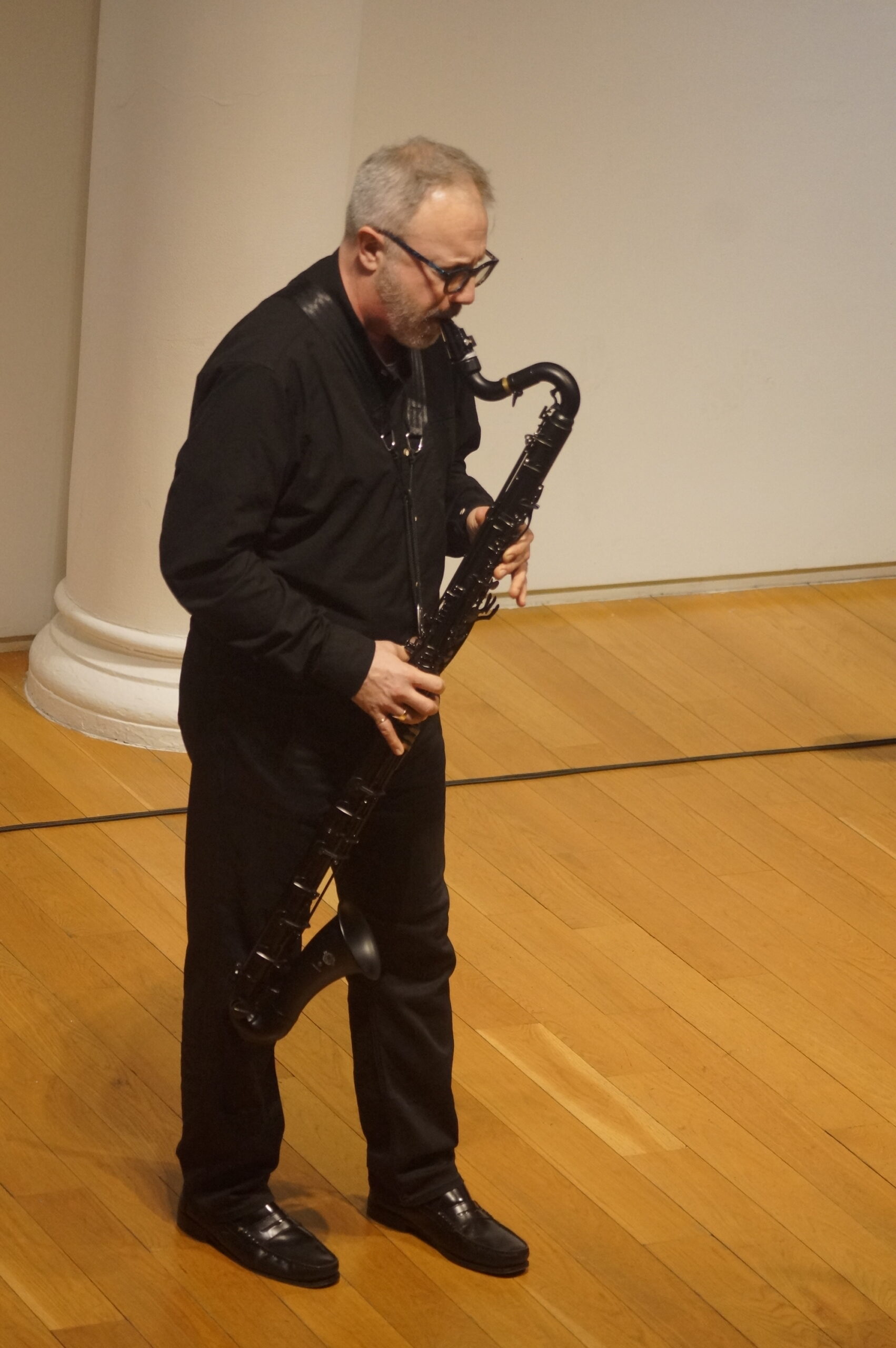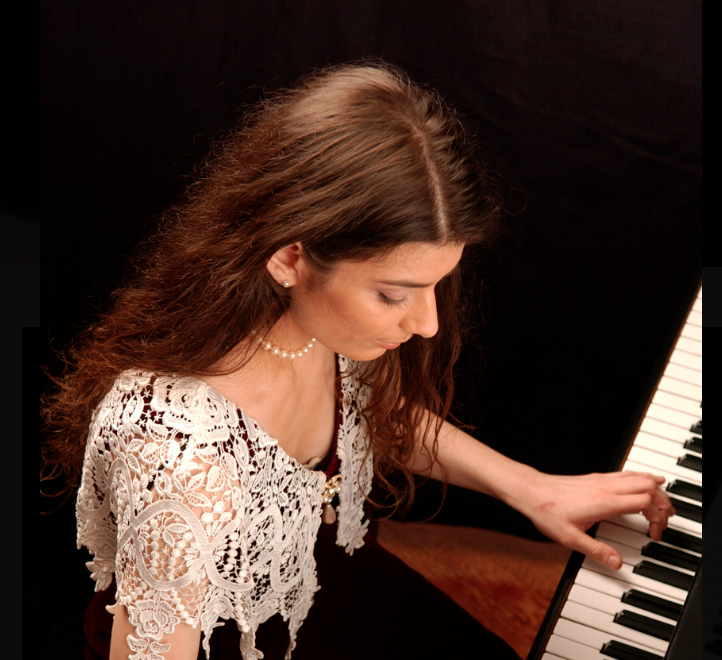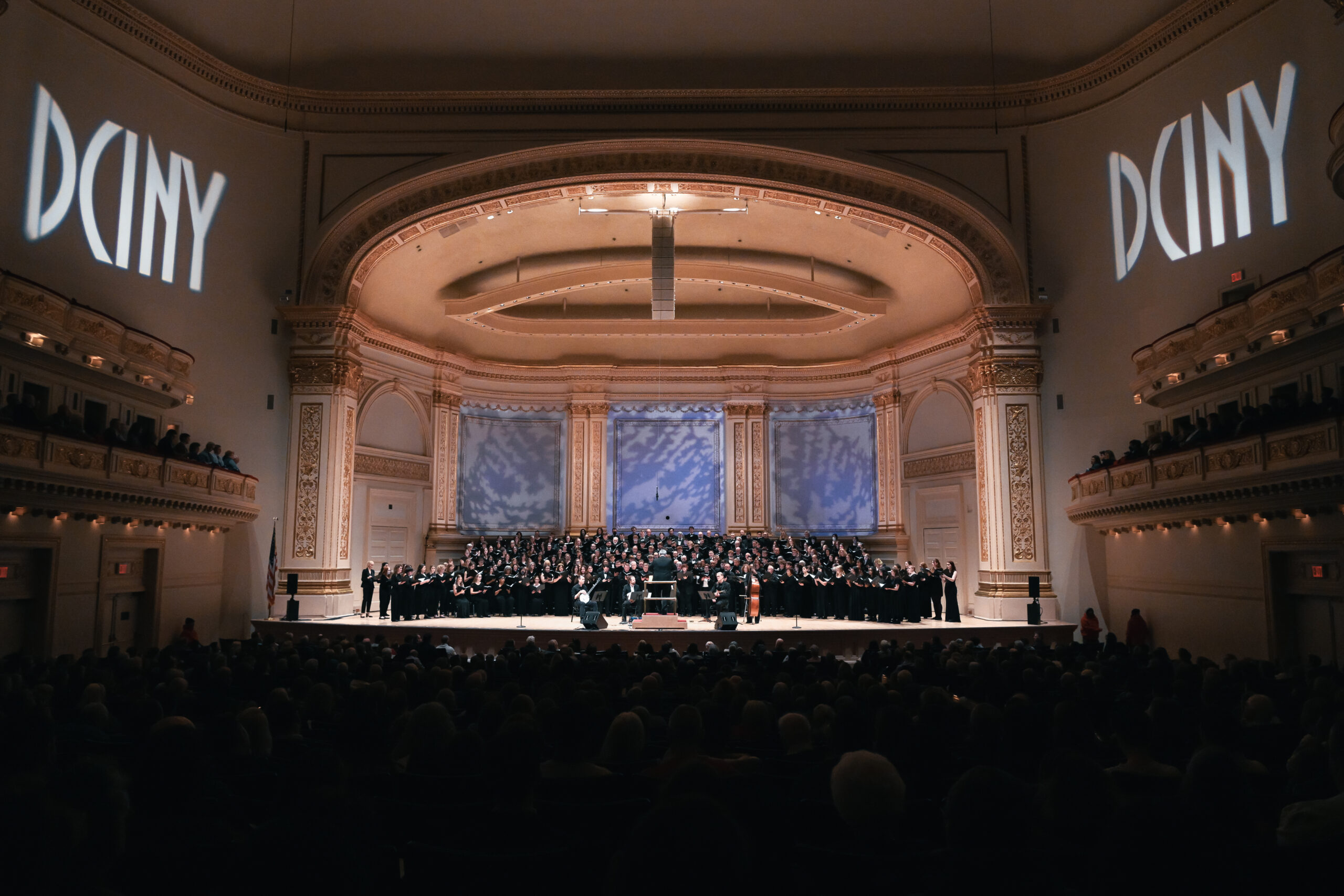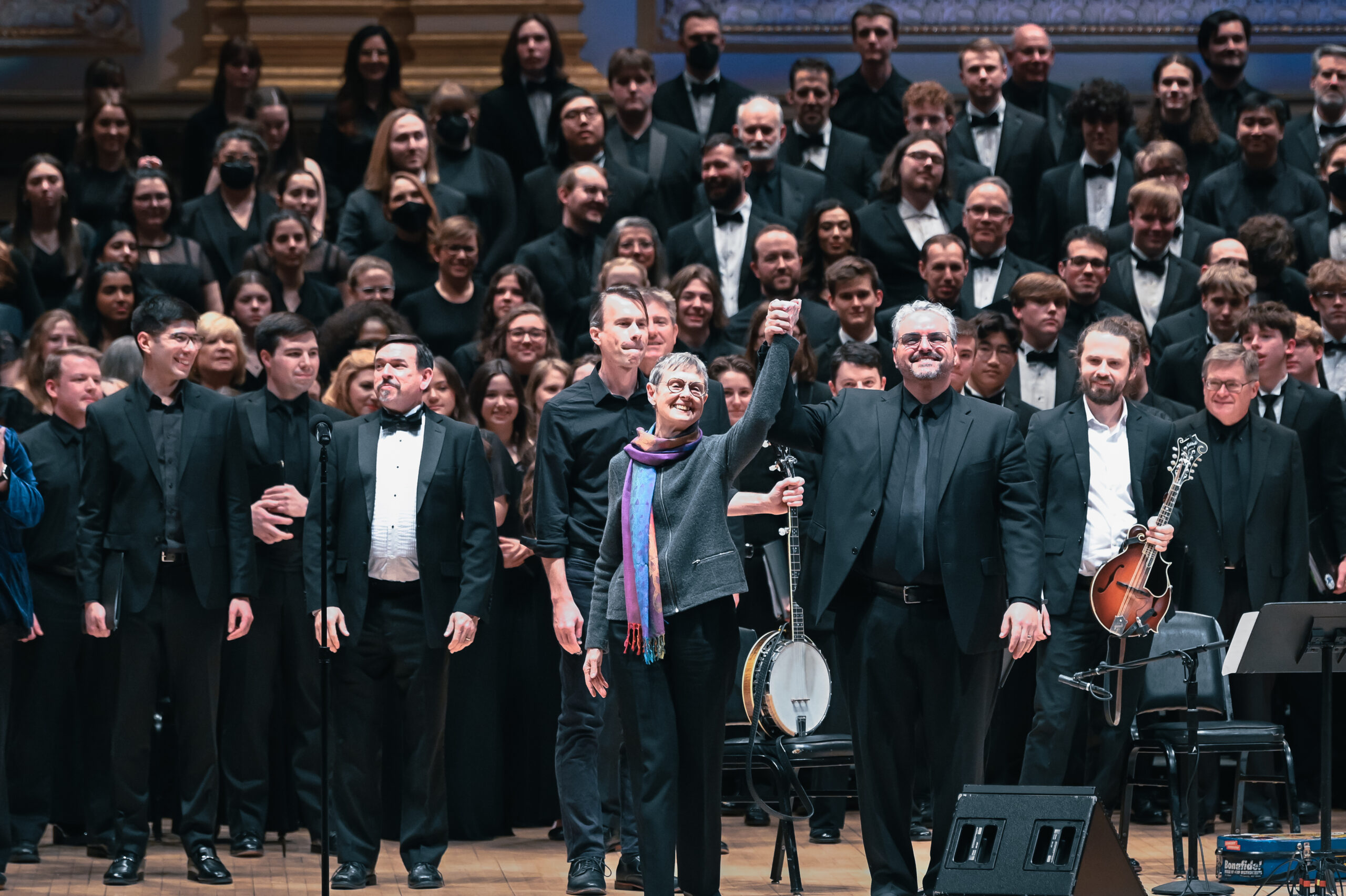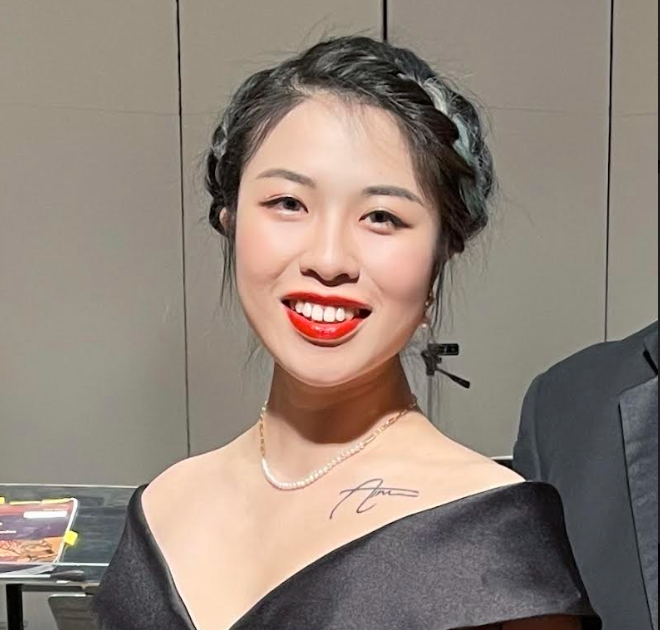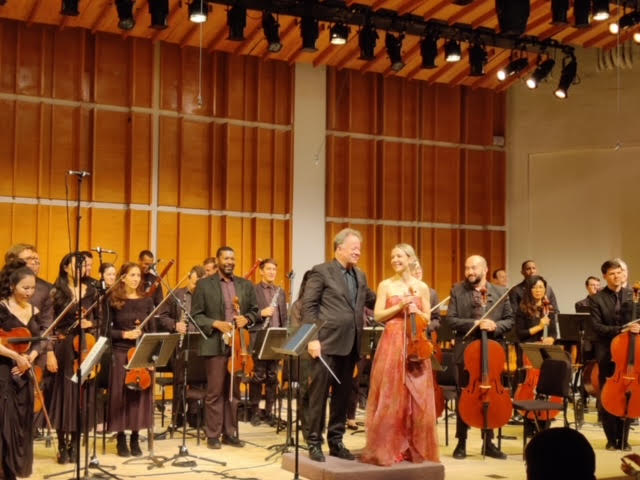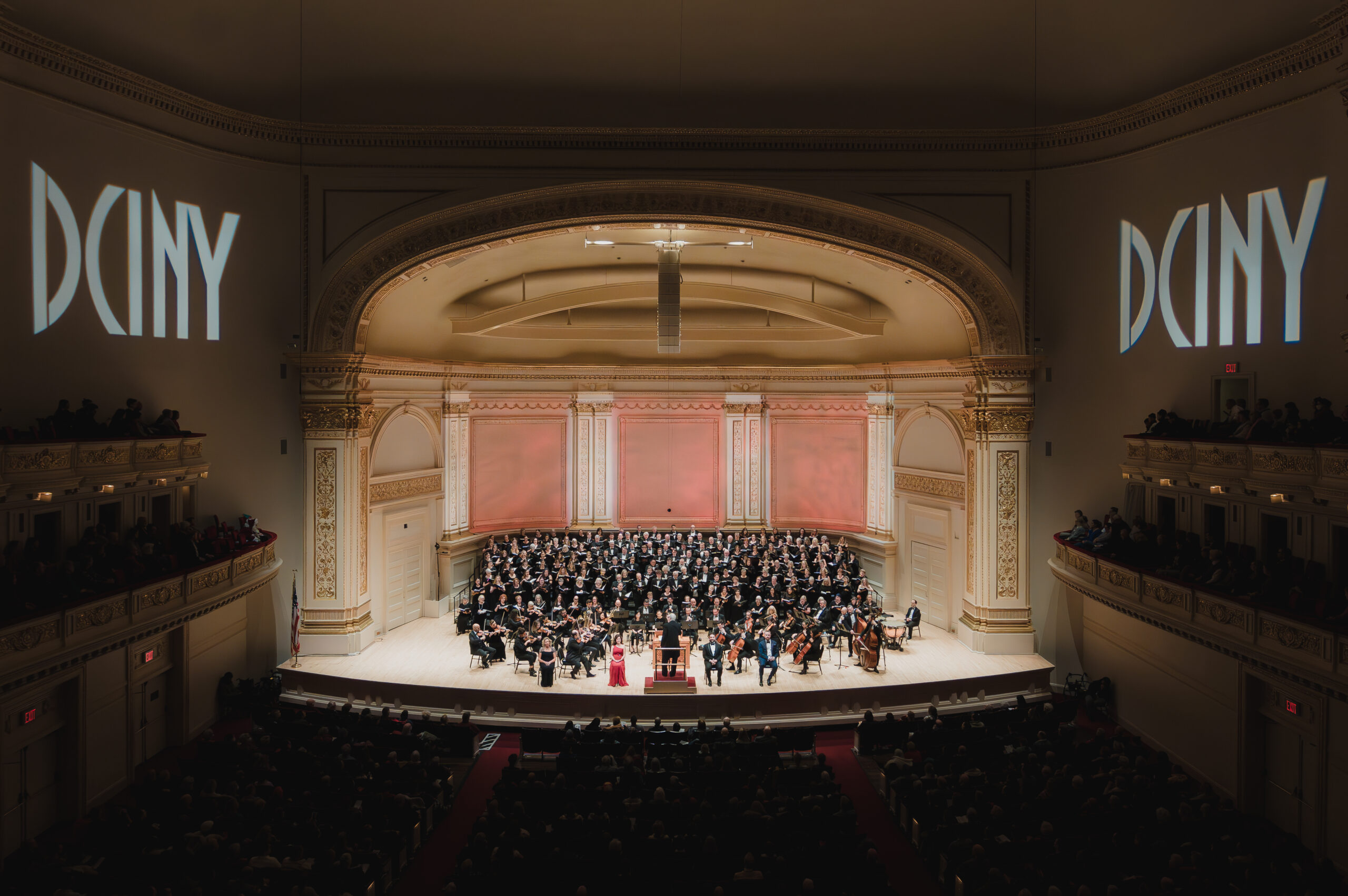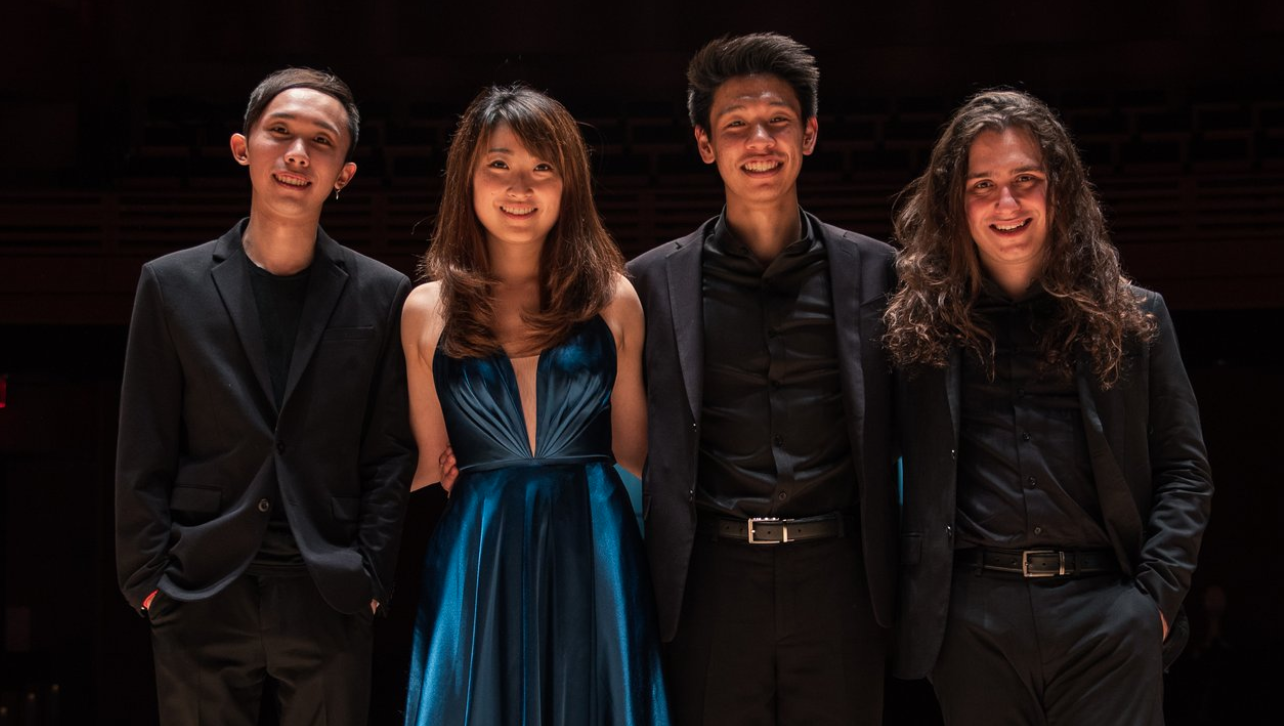Earl and Darielle Linehan Concert Hall, University of Maryland, Baltimore County
Live Concert Recording 11/22/2022
Links to two outstanding videos of unusual repertoire came my way this week, and it is a joy to share them with our readers. The videos are of Teodora Adzharova performing both Shostakovich Piano Sonatas in live concert at the Earl and Darielle Linehan Concert Hall, University of Maryland Baltimore County (UMBC), November 2022, and they are available on YouTube (Piano Sonata No.1, Op.12 and Piano Sonata No. 2, Op. 61). Though this recital was over a year ago, the study of Shostakovich is a long-term pursuit for Dr. Adzharova. As her website (www.teodoraadzharova.com) reveals, she is releasing an all-Shostakovich CD this season (including the Op. 61 Sonata and the Preludes, Op. 34), and she just last month performed an all-Shostakovich program at the DiMenna Center in New York. Meanwhile, she is busy preparing papers on these works for publication and is slated to give lecture recitals on Shostakovich’s music in Europe. A graduate of the Peabody Institute with MM and DMA, Dr. Adzharova stands out from those DMA recipients who merely check the doctoral “box” as a credential; her activities reflect strong ongoing scholarly interest, and her superb playing brings that scholarship to life.
In preparing to watch these videos, this reviewer was struck by the paucity of widely available Shostakovich Sonata recordings. As Dr. Adzharova’s website states, she is “one of the few pianists who performs both of Shostakovich’s sonatas in a single program” – and this listener would agree, having never heard them performed together; the situation, however, is a bit more extreme than that, as it seems that she is one of very few pianists performing either one regularly. There have been notable performances, past and present, of course. Standout versions of Sonata No. 1 (1926) include the rather edge-of-seat Lilya Zilberstein version from 1989 (live and on compact disc). The Sonata No. 2 (1943) boasts proponents none other than Emil Gilels (1965) and Maria Yudina (LP, 1961), with more recent performances by Valentina Lisitsa 2011 (live, YouTube). Viktoria Postnikova, whose repertoire is encyclopedic, recorded both on a 1983 LP, and the ultra-clear, controlled recordings by Konstantin Scherbakov (2003, 2006) are part of a monumental set. Still, considering the proliferation of piano sonata performances by other 20th-century composers, the overall neglect of these Shostakovich works is shocking. His symphonies, the chamber music, and the Preludes and Fugues have been explored routinely from many angles, but the same cannot be said of these sonatas. The culprit could partly be the immense challenges (for the performer and sometimes for the listener), though musicians have certainly embraced plenty of prickly and difficult 20th-century works. It may be, in addition, that an assumption is being made due to the sonatas’ age (around 100 years and 80 years old) that they are “covered ground” and thus do not warrant the heroics involved. Those heroics require a performer of undaunted musical intellect, sympathetic musicality, comprehensive technique, and a commitment to bringing this repertoire to life for audiences (is that all?). Enter Teodora Adzharova.
What Dr. Adzharova proves in each note of both videos is how compelling and beautifully crafted these works are. The first link heard was the Sonata No.1, and it immediately drew this listener in. Just over 13 minutes in duration (one essentially unbroken fast-slow-fast structure, with small transitional sections), it was composed when Shostakovich was just 19, and he reportedly enjoyed performing it himself quite a bit. It is easy to imagine why, as a means of exploiting his own pianism – and one cannot grasp why more young pianistic firebrands do not seize the opportunity to do the same. As Dr. Adzharova played it, with precise rhythmic bite and electrifying energy, she sold the piece. Performing without the score, she conveyed her conception with crystal clarity. Her emotional and dynamic range seemed limitless as she unleashed ever greater aggressiveness in the first section, sailing through glissandi into a more sardonic mode (where one could hear Prokofiev’s influence), and winding down to ppp levels in the shadowy Adagio (marked tenebroso). In the subsequent Lento, she balanced three registers and tiers of composition in a hypnotic haze. There was a moment at the end of the Lento, around eight bars before the change to Allegro, where one did wonder about two rhythmic motives that sounded the same, though marked as different rhythms in the score; with a pianist this excellent, one tends to assume it was a conscious decision based on some research to which we are not privy (rather than a live performance glitch); that being said, there were very few glitches in this surefire performance. The only other minor discrepancies with the score appeared towards the end of the piece, but they also seemed intentional, and this is not the forum for such determinations. If these were “heat of the moment” adjustments, we should all be so fortunate!
The Sonata No. 2, composed seventeen years later in 1943, is much longer (around thirty minutes) and much more substantial. In the hands of Teodora Adzharova it emerges as a masterpiece. Here it is her phrasing that stands out, rendering many of the composer’s themes lyrical and more memorable for the listener, who thus can navigate the piece more easily. Despite the reports that Shostakovich himself played the piano as a percussion instrument, too many players do so to detrimental effect – and it should go without saying that Shostakovich’s work with strings and other more sustaining instruments naturally found its way into all his piano music. Dr. Adzharova plays this solo work like chamber music. Interestingly it is very close in opus number to the E minor Piano Trio, traces of which kept coming to mind for this reviewer.
In this larger work, Dr. Adzhanova’s artistry takes freer rein. Though some of her tempi take the markings with a judicious pinch of salt, one cannot find fault in her conception. The Largo movement is profoundly moving, with the meno mosso section of such deathly dryness that the return of gentler lyricism is even more stirring.
The third movement, marked Moderato and opening with one of the longest purely right-hand solos in the piano literature, is phrased again with care in each detail. Dr. Adzhanova plays with the kind of vocal shaping that marks a true musician. She has the details, and she has the big picture. As the variations unfold, the pianist moves from solo to transparent duo, through an almost pointillistic staccato section, then to aquasi chorale, back to more motoric rhythms, and on to an almost French Overture-type declamation – all leading to a heavenly and somehow heartbreaking suggestion of B major before an understated closing section. Dr. Adzhanova brings it all to life without histrionics but with palpable drama. Bravissima!
Whenever Dr. Adzhanova’s CD comes out, it promises to be worth a listen. This project, as your reviewer sees it, has only two drawbacks. The first is that it will contain only one of the two sonatas, the Op. 61 (though the Op. 34 Preludes will be interesting). You’ll simply have to listen to her performance of the earlier Op. 12 Sonata on YouTube. The second drawback is that this CD will face stiff competition from this pianist’s own live videos. Those are hard to top.

